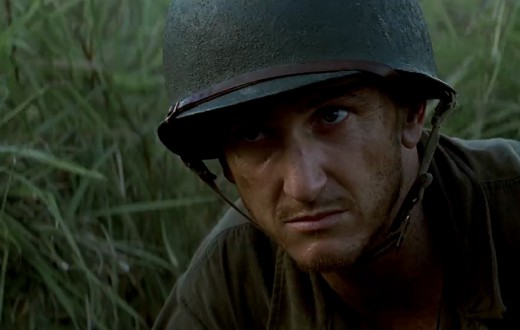Technology is king, let’s face it. And barring some massive disaster that launches us all into some Mad Max-type post-apocalyptic dystopia in which we can’t access our Instagram accounts (my GOD, think of the CHILDREN!) tech is here to stay.
Just as it is for everyone, technology is a huge part of the landscape of the working actor’s world, and will continue to grow more and more ubiquitous. As bandwidth gets cheaper and the hardware necessary to use it becomes ever-more sophisticated and affordable, we’re going to see tech solutions more and more commonly employed to all sorts of acting-related activities.
Take self-taping auditions. There was a time, way back in the dimmest recesses of ancient history—say around 2010—when self-taping auditions was pretty much unheard of. Sure, if some high-end, much sought-after star was in Bali at the moment when a producer desperately needed to see him or her read sides for a potential role, they probably found a way to pull it off. But for most of us, self-taped auditions have only really become a thing recently.
But they are indeed A Thing, and they are everywhere. So it’s vital that you work up your self-tape game to the same level of confidence and professionalism that you apply to your in-person auditions. Here are a few important things to think about when you’re getting ready to self-tape.
1. Just Do It Already
Now, let’s be perfectly honest with one another: at some point we’ve all blown off an audition that we probably should have made. Things happen–like a lack of time, or rain, or hangovers–and yes, it’s crappy and not professional to not go audition, but there it is. You can’t make it out for every single one. But when it comes to self-taping, you have absolutely no excuse. You don’t even have to shower if you can manage to make yourself look presentable without one, let alone toddle your wee self out the door and into that big, bad world. How can you possibly justify blowing off a self-tape? Every time someone reaches out to you and asks you to submit a self-taped audition piece, that means there is someone thinking you might be right for a part—and possibly more than one someone. Agents and managers are often reluctant to directly tell actors that a CD or a producer saw your headshot and asked to see you, for fear of getting your hopes up, or that you might self-sabotage via heightened nervousness or a sense of pressure. But you never know who is thinking of you! As low-stress and low-time commitment as it is to self-tape an audition, you really have to take advantage of every opportunity. However…
2. Don’t Be Lazy
It may be less of a schlep to self-tape than it is to go to some shabby office across town in rush hour traffic only to wait for two hours in a room full of bored actors for your chance to read, it’s true. But that doesn’t mean you can treat self-taping auditions with anything less than total professionalism. In fact, since you control the final product, there is absolutely no reason your self-taped audition piece should be anything less than the best work you are capable of doing. When you physically go into an audition room to read, you get one, maybe two chances. Nerves, exhaustion, distractions—a million things can sabotage your read. Not so with self-taping. If you don’t get it right, cut and start over. Learn your sides until you know them cold, work with your reader until they get sick of you, and don’t settle for anything less than perfection—since all you have to do is hit “delete” if it turns out to be anything less.
3. Don’t Show Us Your Bedroom
Speaking of professionalism, you absolutely have to take the time and put in the effort to make your self-taped audition look as clean and professional as possible. Set yourself up with a clean background–perhaps not stark, hospital white–but at least a lighter-colored blank wall, a clean sheet or ideally a curtain, as the folds in the fabric lend some depth. Make sure you wear neutral colors that neither blend in nor clash horribly with the background. And for the love of all that is holy, make sure there isn’t a lot of visible clutter. You don’t want the CD or producers trying to figure out what the hell that jumble of things is on the shelf behind you, or commenting on your messy room while you’re trying to emote. Make sure the focus is on you.
4. Ready for Your Close-Up
With camera quality on phones and computers these days, you don’t have to invest in a separate camera, but make sure you use the highest quality possible settings on your phone—a newish one, please—for recording. A tripod or a phone clip is a cheap and worthwhile investment. And take the time to learn how to do some simple edits, like trim the bit before you start and after you finish, and add a fade-in/fade-out. A simple title with your name, the date, and the role you’re reading for can’t hurt. And make sure you’re in a quiet place where you won’t be disturbed. Your mom screaming at you to pick up that messy room while you’re reading isn’t a good look.
5. Follow the Instructions
Nothing will kill your self-tape audition faster than not doing what you are asked to do. Many producers will have specific instructions for the actors they’re looking at, and they want it to be standardized as they go through the submissions. Think about every cattle call audition you’ve ever done where you go through the standard list—smile, profile, other profile, turn, etc. This isn’t the part where you want to stand out; just do what they ask. They may want a full body shot, or tight close-up or some specific information on the slate. So make sure you read the original email very carefully before you send off something incomplete or incorrect. If you seem to be someone who can’t follow simple directions for a self-taped audition, why should they think you’ll be able to take direction on set?
6. Submit Early and Often
While you do have the luxury of taking the time to produce the perfect audition when you’re self-taping, you don’t have all the time in the world. Getting your self-tape in earlier rather than later is a potential bonus. Why? With so many actors sending in audition tapes, the casting team is unlikely to wait until the actual deadline to start processing them. Rather, they will probably start working their way through them as soon as possible, especially if there are a lot. Putting yourself at the front of the pack can be a big plus in your favor. Who knows, they may decide they’re finished with casting your role once they come across your piece, before they even finish looking at the rest!
7. Slate Separately
A great way to ensure that you are taking the time to fully get into character and to demonstrate for the casting team the difference between you, the actor, and the character you’re reading for is to shoot your slate scene separately from your actual audition piece. You’re going to send them in as one file, but if you cut after your slate, then roll again when you’re ready to read, it provides a clean break and a clear transition. Also, when you slate you’re looking directly into the camera, along with doing whatever else the producers have asked for. Flipping the switch to “in character” while the camera is off is your best bet for a clean and watchable audition piece.
Ultimately, in order to take advantage of the boom in self-taped auditions, you have to devote yourself to preparing your self-tapes just as professionally and thoroughly as you do your in-person auditions. In fact, since you are saving time you would otherwise use getting to the in-person audition, not to mention waiting to read, you have even more of an opportunity to prepare your best work!
And don’t forget to self-submit at the most widely-read site for CDs, agents and producers!







